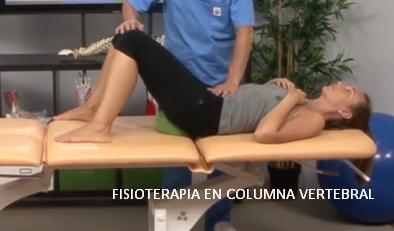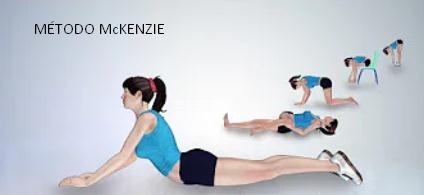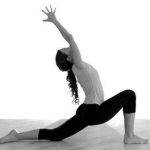Spinal physiotherapy, Its purpose is the strengthening and conditioning of the múback muscles, to better support the spine and resist stressés, which can lead to pain relief.

Back strengthening therapy focuses on the múcentral muscles, including abs, glúteos, hip and those surrounding the spine. All core tissues are essential to support and minimize stress.ón in the vévertebrae.
Back problems can affect any age group. Physical therapy-related exercises are a great activity for all ages. are ideal for those with Back pain general or any degenerative change in your spine.
Two of the physical therapy programs más comúnmently used are: the méall McKenzie and stabilizationón fromámica, which are learned mainly by working with a physical therapist.
The type of program prescribed generally depends on the conditionón and the needs of the patient. thenón, we will see the méall evaluationón and treatment más used in spinal physiotherapy, además of several essential exercises to relieve pain and improve the spine.
Index
Spinal physiotherapy: Método MCKenzie
The Méall of McKenzie is an evaluation systemón and internationally used treatment for spinal and extremity pain, developed by New Zealand physiotherapist Robin McKenzie.

With McKenzie's approach, Physical therapy and exercises used to extend the spine can help centralize the patient's pain away.átaking it from the extremities and directingéswing it backás. It is méeverything centralizes the pain throughés de:
- Back muscle strengthening.
- Eliminationón from presióno of joints, dayíz nerve and spinal discs.
- reductionóno radicular pain.
Classifyón mecáunique to the McKenzie system
Patients are classified into four groups according toún the answer mecháonly symptomáethics to repeated movements and sustained positions. Every sísyndrome requires a management approachón different and are classified into: síposture syndrome, sídysfunction syndromeón, síndrome of disorder and síndrome no mecánico.
Síposture syndrome
Refers to pain that occurs due to a deformityón mecáunique to normal soft tissue. The pain arises under positionsátics, such as sitting with shoulders downíof the. Nevertheless, the pain disappears when changing positionón.
Treatment is based on educating the patient, correct and improve postures. Además to avoid prolonged tensionón about body structure, decreasing stressés and inappropriate positions.
Sídysfunction syndromeón
Refers to pain caused by deformityón mecáunique of tissues, such as scar tissue. Pain arises at the end of the range of a restricted movement.
Treatment focuses on remodeling the tissue, a través of mobilization exercisesón, so that pain and limitation are releasedóno of movement.
síderangement syndrome
Refers to pain that is caused by an alterationón in positionón of normal rest of the affected articular surfaces. It is sísyndrome is classified into two groups: irreducible and dissociative disorderón reducible.
In the irreducible disorder there is no strategy capable of producing a permanent change in the síntomas. Nevertheless, in dissociationón reducible, treatment includes mecháuniqueness of the patient with repeated movements or sustained positions.
Síndrome no mecánico
Hereí patients who do not fit within the s are classifiedíntomas mecáunique previously exposed. Some of his sísymptoms are: spondylólysis and spondylolisthesis, problems afterúrgicos, low back pain in pregnancy, spinal stenosis, among others.
 Spinal physiotherapy: stabilizationón fromámica
Spinal physiotherapy: stabilizationón fromámica
The stabilizationón fromámica aims to eliminate pain by distributing the weight between the anterior and posterior elements of the spine. includes a range of exercises that can help almost anyone.
The exercises dinástabilization microphonesón in spinal physiotherapy, are intended to find and maintain the neutral spine, a natural posture that adapts to the curvature of the spine and minimizes stressés.
Spinal physiotherapy exercises
Spinal Physical Therapy Exercises Increase Blood Flow in the Back, which translates into a greater flow of oxígene and nutrients to this regionóno of the body. These strengthen and improve the flexibility of the múmuscles and connective tissues of the back, the center, The arms and the legs, which can help reduce the amount of tensionón in column.
Before starting any exercise it is important that you consult with a professional méI say. Please note that not all of these activities will beánot appropriate for everyone. Hereí we will introduce you 4 exercises báguys to help youán with the spine.
- Knee-to-chest stretch
Acuélay on your back, relaxing the spine. Place both knees in the chest and openáaims. keep this positionón lasting 10 seconds and then slowly lower your legs. Perform 3 series during the dayía.

- Puente
AcuéLie on your back with knees bent and arms against your body and palms on the floor.. Squeeze your buttocks and lift your hips off the ground to bring your torso to a línear diagonal straight line. keep this positionón lasting 5 seconds and then slowly lower your lower back to the ground. Repeat 10 times of three sets each.

- Cobra lying
Acuélie face down on the floor with your forehead against a towel, arms against sides with palms facing down. touch the tongue with árough of the mouth and join the omódishes while lifting your hands off the floor. Pull your elbows in, palms out and thumbs up. Lift your forehead from the towel, keeping eyes focused on the floor. Hold this posture for 10 seconds then release. Repeat 10 times.

- Rotationóno knees
AcuéLie on your back with your knees bent and both feet flat on the floor.. Slowly turn your knees to the left side as far as you can without increasing your síntomas. Later, slowly turn your knees to the right side. Perform 10 repetitions of three sets each.

